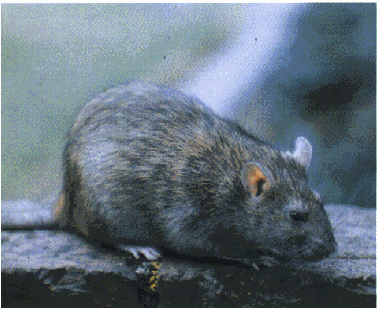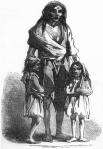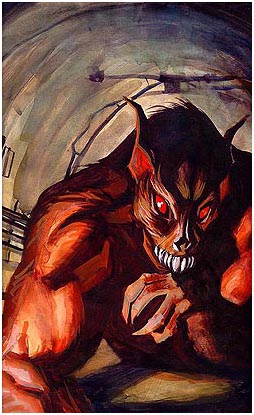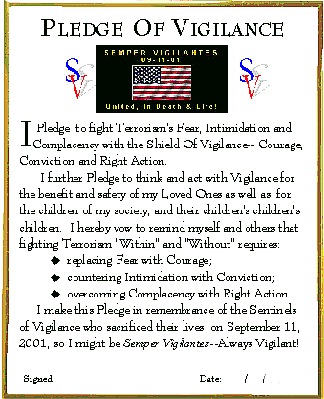|
 VigilanceVoice
VigilanceVoice
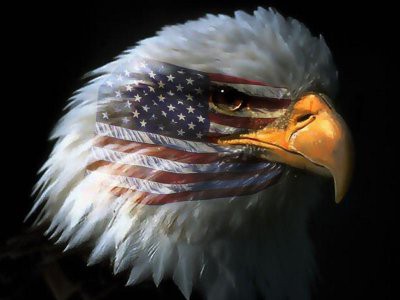
VigilanceVoice.com
Monday--September
2, 2002—Ground
Zero Plus 355
There's A Rat In The Subway!!!
by
Cliff McKenzie
Editor, New York City Combat Correspondent News
GROUND ZERO, New York
City, September 2--"Look, Mom, there's a rat in the subway."
That was the story.
Our six-year-old grandson, Matt, spotted the rat--scooting here and there,
it's long tail dragging on the soiled, scarred concrete. Our
daughter had her September 11th baby, Angus, nearly 10-weeks old, safely
slung to her chest. Sarah, her four-year-old daughter, pressed
up against her leg.
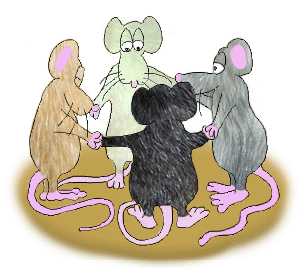 |
Our daughter is
nonplussed by "creatures of the city." She noted the rat was near a
woman and told the woman about the rat's presence. The woman edged
away. The rat shot from one location to another, passing near
a man standing near the platform. The man caught the shadow of the
rat out of the corner of his eye, let out a scream and his feet flailed as
in a cartoon, running to the other side of the platform.
The kids laughed.
Sarah, half-Irish, tugged at her mother's dress and pointed to her new
brother, oblivious to all the subway commotion. "Mommy, Angus just
saw his first rat...his first subway rat, Mommy!"
Fearlessness of city
vermin seems to be a genetic gift, at least for Irish-born children in the
year 2002. They also aren't afraid of Terrorists.

|
I'm part Irish. My grandfather was Scotch-Irish. Perhaps
I'm a quarter Irish, I'm not sure. I never took to the four-leafed
clover stuff. I prefer the idea I'm Scottish even though I was
adopted, and my given name was not McKenzie but Anderson. My father
was of Irish and Scandinavian descent. My grandfather was a
McPherron. So in the doggerel genetic pool, I'm probably more Irish
than anything. My wife is of English and German descent.
Her mother, I have always believed, is a direct descendent of Hitler and
Eva Braun.
Labor Day brings memories of lots of things
to lots of different people. To my Irish son-in-law, it
reminds him of his ancestors who came to New York as "subway slaves,"
human rats forced to work deep in the bowels of the city with picks and
axes because they weren't skilled at much more. His ancestors left
Ireland for glittering hopes of a "land of plenty" in America, only to
find enslavement and prejudice. In those days the Irish were the "coolies"
of labor, working the dirty jobs and treated as "low-life" minority labor.
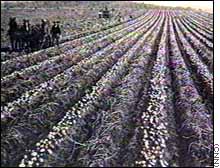 |
Beginning in the
1830s, the presence of the Irish in New York City changed in both size and
composition. The surge in immigration occurred as a result of the "Famine"
or "Great Hunger" caused by the "blight," a fungus that devastated
Ireland's potato harvests between 1845 and 1851. In New York City, a
principal point of entry for emigrant ships, 52,946 Irish landed between
June and December of 1847. By 1860, twenty-five percent of New
Yorkers were Irish-born.
The reaction of native-born New Yorkers to
their new Irish neighbors was often hostile. The Catholic Irish
represented unwanted labor competition and a culture that was seen as
foreign to American New Yorkers. The poverty, cultural habits, and
Catholicism of the City's growing Irish population raised fears among
native-born New Yorkers, prompting some to wage campaigns of bigotry,
slander, and violence against the Irish.
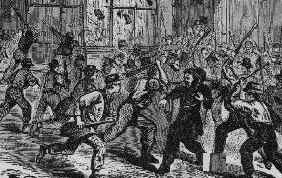
|
|
Draft Riots of
1863 |
Skilled immigrant laborers found work principally in the building trades
and the garment industry. Irish men provided the labor, both skilled and
unskilled, which built the City's nineteenth-century infrastructure. On
public works projects such as the building of the Croton Aqueduct, which
opened in 1842, the construction of Central Park, Brooklyn Bridge, and the
later New Croton Aqueduct, placed in service in 1890, Irish workers toiled
long hours under treacherous conditions for meager wages.
The complexity of ethnic conflict is best
illustrated by the Draft Riots of 1863 in which young workingmen,
including many Irish, angry that they could not afford to buy a substitute
or pay the fee that would exempt them from the first federal military
draft, attacked people and institutions associated with the Republican
party and the Civil War.
They set upon the City's
African Americans, burning the Colored Orphan Asylum and lynching eleven
people. The Draft Riots were finally quelled with the help of the City's
Irish Catholic clergy, heavily Irish police force, and Union soldiers,
many of whom were Irish, recalled from the fields of Gettysburg.
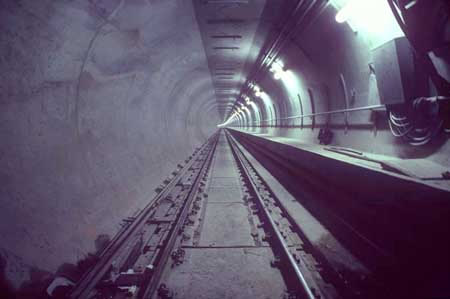 |
New York City was the second in the United States to build a subway.
Boston was first. The first line ran north from City Hall to 42nd
street. To build it, entire streets were torn up and the
tunnels dug, then the street was put back in order. The first
section of the line opened in 1904. It called to the rats--"a new
place to live."
Today, the Irish hold a place of honor in the
legend of building New York City. Each year, the St. Patrick's
Day Parade closes 5th Avenue, and police, firemen, and politicians parade
with their chests puffed, reminders that the sweat and toil of immigrants
once treated as "scum of the earth," now command the city's muscle, its
sinew
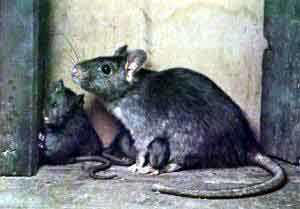 |
Perhaps that's why our grandchildren weren't upset at seeing a subway rat,
and that it was a glorious event in the eyes of our granddaughter who
exclaimed jubilantly: "Angus got to see his first rat, Mommy!
A subway rat!"
Most kids in America might think a subway rat as an
ugly, horrible creature. But our lovely little Sarah almost
saw it as an ally, a "city neighbor," a source of "oneness" with a world
of concrete and tunnels, and a place called Ground Zero.
Today, in
the face of September 11, we treat those from the Middle East with
suspicion. We're just not sure what side of the fence they are
on--at least some of us. Our fleet of 11,000 cabs and 40,000
drivers zipping around the city is comprised mostly of immigrants with
turbans and the olive skins of the Middle East. Long past are the
Irish cabbies, talking out of the corners of their mouths.
But the rats live.
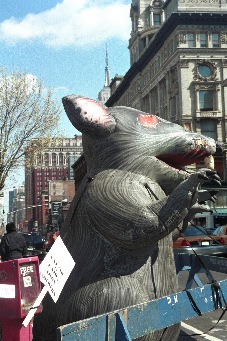 |
When you walk down the sidewalks of New York City, you have a good chance
of bumping into a giant, inflated vinyl rat sitting in front of a
building. It is a "labor rat." It hisses out that the
construction of the building is being done by non-union work.
Labor "rats" are those who work for less, today, primarily Russian or
Eastern European labor.
But to me Labor Day is not about a day off before the
end of summer.
Labor Day is about keeping a Vigilant Eye out for the
Rats of Terrorism.
I thought it interesting that our grand daughter wasn't
afraid of the subway rat. She had learned to "live with the
vermin."
This isn't to suggest the home she lives in has rats, or that
it isn't clean. It doesn't and is. But rats
and bugs and other "concrete city creatures" are part of the city life of
any child. They grow up walking down streets where garbage is
put on the sidewalk, attracting "concrete creatures." They learn not
to be Terrorized by what most children in urban areas would find
frightening.
They even make it a big deal to share the "first
subway rat" with their new baby brother.
Big city children grow up learning how to deal
with Terrorism. Around them, sirens wail constantly.
People--giant people from their perspective--threaten them with girth and
feet bustling down the sidewalks. They learn to dodge and weave
their way through life at an early age. They learn to look
both ways before crossing a street, always wary that a cab or car or
bicycle might shoot out to breech a caution light.
They learn not to talk to strangers, or shake hands, or
pet the head of one of thousands of pit bulls or any other dogs being
walked by owners who use them as one might a .357 magnum strapped on their
hips. If some food falls on the ground they are taught to
never to pick it up, for the germs of the city have latched themselves
tightly to it from countless people from fathomless countries with
limitless potential for disease.
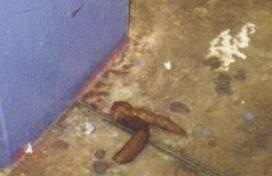 |
So what's
a rat or two?
Especially to Irish kids?
Labor Day in the city is about Vigilance.
It's about the life one learns to protect himself or herself from all the
arrows of city life, most of which point their tips at the unsuspecting,
the unaware, the non-Vigilant, the Complacent.
A city child learns quickly to replace Fear with
Courage, Intimidation with Conviction, and Right Action for Complacency;
for if the city child doesn't, then the city will consume him or her.
Vigilance takes work. Labor Day is
about working to overcome the obstacles that face us in life.
If we look back at how great America is, it rose to great heights on the
backs of those who were brave enough to shoulder the pain and anguish of
its hope.
The Irish are only a small but important part of New
York Labor Day history. There are many other groups who
provided resources to build the city, and who suffered the tremulous
journey to acceptance and power.
New York is rebuilding Ground Zero. It will
employ a variety of people from all cultures, a host of diverse people.
The labor that will rebuild the destruction will add to the city's history
of people giving their sweat and skills to creating new monuments.
And, when it is all done, the rats will be there.
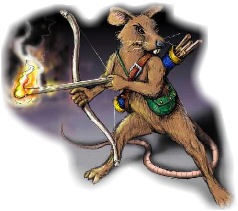 |
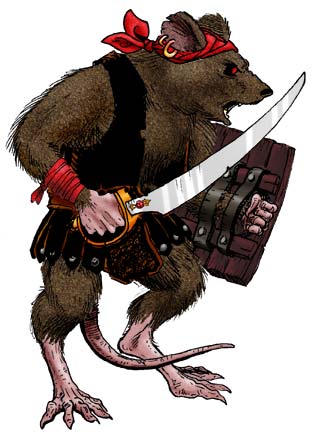 |
The
rats and other vermin will live down in the foundations of all
that was built. They will be reminders to all who see
them not to be afraid of their existence, to not scream or run
or be Intimidated by them, but to look at them with fearlessness,
and Courage and recognize them for what they are.
Terrorism only wins when we scream
at its presence. If we are able to face it, and not let
it frighten us, we will be safe from its horror. We will
build our Shields of Vigilance without Fear motivating us, and
therefore make them strong and durable, rather than weak and
flawed.
One day, adults won't jump
and scream when they see a rat in the presence of children.
Instead, they will shoo them away and be more concerned about
the safety of a child than about their own security.
That will be on Vigilance Day, which always follows Labor Day.

Go To Sep
1--"Tomb Of The Unknown Sentinel Of Vigilance"
©2001
- 2004, VigilanceVoice.com, All rights reserved - a ((HYYPE))
design
|
|


